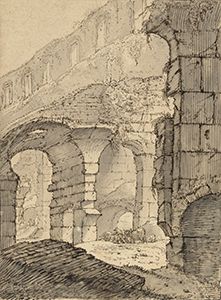10.1: Introduction
( \newcommand{\kernel}{\mathrm{null}\,}\)
Week 8
Introduction

Rome’s history spans more than 2,500 years. While Roman mythology dates the founding of Rome at around 753 BC, the site has been inhabited for much longer, making it one of the oldest continuously occupied sites in Europe. The city’s early population originated from a mix of Latins, Etruscans and Sabines. Eventually, the city successively became the capital of the Roman Kingdom, the Roman Republic and the Roman Empire, and is regarded as the birthplace of Western civilisation and by some as the first ever metropolis. It was first called The Eternal City (Latin: Urbs Aeterna; Italian: La Città Eterna) by the Roman poet Tibullus in the 1st century BC, and the expression was also taken up by Ovid, Virgil, and Livy. Rome is also called the “Caput Mundi” (Capital of the World).
- Rome. Provided by: Wikipedia. Located at: https://en.wikipedia.org/wiki/Rome. License: CC BY-SA: Attribution-ShareAlike
- Blik in het Colosseum. Provided by: the Rijksmuseum. Located at: https://www.rijksmuseum.nl/en/collection/RP-T-1898-A-3723. License: Public Domain: No Known Copyright


